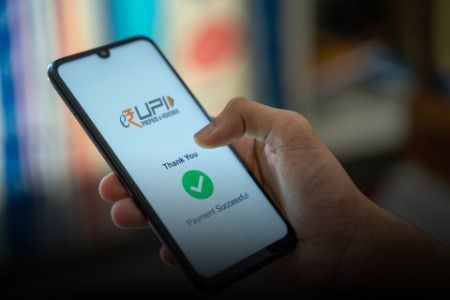The borrowers on the other side will have easy access to credit with the convenience and security of UPI. This could be a game-changer for industries such as the Micro Small and Medium Enterprises (MSMEs), which contribute 30% to the GDP, but often face a shortfall in supply of credit estimated between US$250 and US$300b[3]. UPI-based lending will make banks and NBFCs more efficient and they will provide credit in a much quicker and economical way to the borrowers.
Opportunity to rethink product designs
Banks and PSPs looking to monetize UPI payments and lower the cost of credit disbursement, will launch newer, more innovative UPI-based revolving credit lines, instant overdraft/EMIs on savings/current accounts and personal loan solutions for consumers. Pre-sanctioned working capital and overdraft credit lines from banks, enabled by UPI, can be used for business-to-business payments with transaction limits. FinTechs focused on digital lending can potentially rethink the BNPL(Buy Now, Pay Later) product, thereby unlocking the true value of the digital payment ecosystem.
As we further progress, new business models can be explored where FinTechs or UPI payment apps can be leveraged to source customers, facilitate transactions, generate bill payment reminders, and accept repayments. This will increase interoperability in the credit domain and FinTechs can leverage UPI based lending data to come up with improved services for the users.
Building robust underwriting models
Digitization of the economy and availability of data provides a more objective and comprehensive basis for credit assessment, thereby enhancing quality lending to both individuals and businesses. This presents a substantial opportunity for the financial services sector, while addressing the credit needs of the Indian diaspora and businesses.
Underwriting such loan products will require lenders to leverage UPI data, which can help build underwriting models using transaction parameters such as declines due to insufficient funds, merchant type (a jeweler is a riskier segment that grocery, for example), geographical location, to assess the borrower’s creditworthiness.
Also, with increased exposure of credit to the customers, the lenders are more likely to review their credit portfolios to avoid any defaults and maintain NPAs (Non performing assets) within the permissible range. In the near future, this move is likely to be a tailwind for account aggregators, TSPs (Technical Service Providers) and alternate data providers as well.
Way forward
With time, we will have clarity on how the economics will work out for digital lending on UPI. The Merchant discount rate (transaction fees merchants pay to accept digital payments) will be vital for sustaining this, as will be the interest or revolving income (the interest rate customers will pay for the loan). For acquiring entities (those who put up the QR codes at merchant locations), this will also open up a revenue stream for fee income from merchants for providing lending services and driving affordability. We might also see subvention models, similar to those seen in the BNPL (Buy Now, Pay Later) ecosystem, emerge as a consequence of this.
The article was first published by ET BFSI.com How Recent Changes to UPI Are Helping Fill India’s Credit Gaps.


